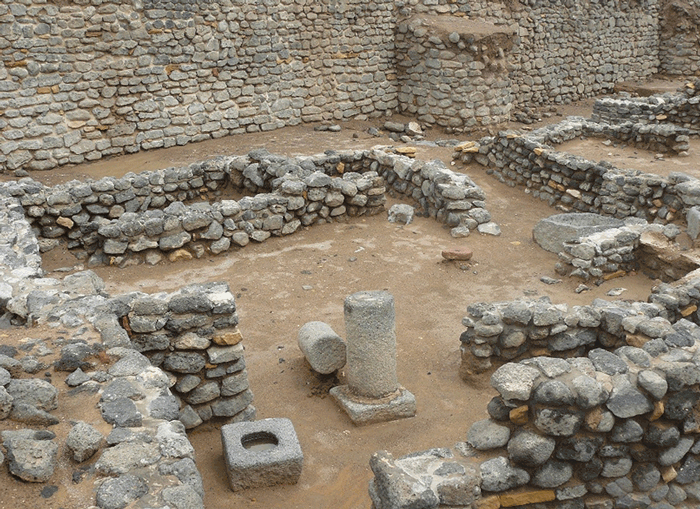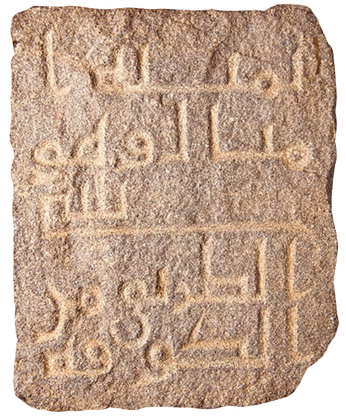
Darb Zubaida
The Old Arabian Route
 |
Susan Hockfield
President Emerita and Professor of Neuroscience at the Massachusetts Institute of Technology, is a member of the World Economic Forum’s Foundation Board.
Convergence between sciences will help deliver new technological solutions for development.
By Ghazanfar Ali Khan
Some of the most important of Saudi Arabia's antiquities are associated with old roads, routes or shelters that served the pilgrims several hundred years back. With the passage of time, facilities specifically designed to serve the pilgrimage along the routes from Egypt, Yemen, Syria and the Islamic east either decayed or destroyed. But, many of them have their remnants, which shed new light on the history and heritage of Arabia.
The most impressive of these routes is Darb Zubaida, a great monument to Islamic piety built by Zubaida Bin Jafar, a great Muslim lady of her times. As a work of engineering and social organization, Darb Zubaida is one of the most impressive of Islamic antiquities in Saudi Arabia. The 1000 year old historic pilgrimage route from Iraq to the holy city of Makkah, popularly known as Darb Zubaida, is a new candidate for UNESCO's World Heritage List.
A trip to Kufa in Iraq from the holy city of Makkah today through the old Arabian route will be arduous and fraught with danger. But, Darb Zubaida was a luxury road, when it was built about 1000 years ago. In fact, the 900 mile road from Kufa to Makkah was one of the earliest routes created specifically for pilgrims, who used to come in groups for Haj and Umrah. Today, the Darb Zubaida is the most significant of the early routes that need to be further explored and studied.
Indeed, apart from being the cradle of Islam and home of the twin holy cities of Makkah and Medinah, Saudi Arabia also has a long and magnificent pre-Islamic heritage. But thanks to the efforts of the Saudi government that it has focused its attention on Islamic heritage and antiquities in a renewed move to showcase them to the world in right perspective.
As far as Darb Zubaidah is concerned, the road was extensively developed during the era of the Abbasid caliphs (750–1258), whose capital was Baghdad. The archeological excavations of Al-Rabadha, a settlement on Darb Zubaida, have given important information about the early phases of Islamic culture, especially an insight into urban housing and the structure of the old route.
More than a thousand years ago, millions of pilgrims walked this road on their journey to perform Hajj in the holy city of Makkah. The vision and the efforts of Zubaida Bin Jafar led to the construction of this road for pilgrims. Zubaida was a great lady, who lived during and after the time of Imam Al-Shafei. She was married to Haroon Al-Rasheed in 165 AH (781 AD), who was the fifth Abbasid Caliph and ruled for 23 years (786-809).
In the history of Arabia, Zubaida is known widely for her major welfare projects, which alleviated the sufferings of the people in general and pilgrims in particular during those olden days. Zubaida was the wealthiest and most powerful woman in the world of her time. She was a noblewoman of great generosity and munificence. She also developed many buildings in different cities.
Zubaida is also known to have embarked upon a gigantic project to build service stations with water wells all along the pilgrimage route from Baghdad to Makkah. At that time, it was a sort of miracle come true for the pilgrims, who were always insecure while coming for Hajj. The famous Zubaida water spring in the outskirts of Makkah still carries her name. She was also a patron of the arts and poetry
It is important to note here that the Saudi Commission for Tourism and Antiquities (SCTA) is promoting the historic pilgrimage route called Darb Zubaida as a candidate site for entry into the UNESCO’s world heritage list. After successful quest last year for historic Jeddah to be listed, the SCTA began preparations for additional historic and archaeological landmarks in the Kingdom and recommended 10 such landmarks for registration.
The Saudi government approved SCTA’s request to register 10 sites on the world heritage list. One of them is Darb Zubaida because of its cultural and historic importance in Islamic history. Saad Al-Rashid, an adviser in the SCTA's heritage department, pointed out that Darb Zubaida was well-known in Islamic history among all Muslims. Zubaida's biggest achievement was the planning and execution of this road project from Kufa to Makkah.
There was a path that existed before but she saw the pilgrims dying with thirst and losing the way because of desert and sandstorms. To solve this problem, Zubaida planned to build this well-demarcated route with buildup walls and shelters to protect the travelers from shifting sands and harsh weather conditions. The road was divided into more than 40 stations for shelter of huge caravans of pilgrims with their animals.
Deep wells, water pools, guest houses, mosques and police posts were erected to provide comfort and security to the pilgrims. High minarets were raised to locate the place and, in the night, towers were lit with fire to guide the caravans to the right direction. All these structures were so strong that they remained intact for centuries. The result was that Darb Zubaida served million of pilgrims from Iraq, Fares, Khorasan and Kurdistan for hundreds of years.
Though, about 1,300 years have passed since the road of constructed, some of the wells and pools of this route can still be identified. There are still milestones that show the distance on the road. One of the milestones, inscribed in Arabic says: ‘Eight miles and this is two thirds of the road from Al-Kufa’. As part of the care of the Darb Zubaida, succeeding caliphs had milestones placed all along the route to help pilgrims work out how far they had travelled.
Along this old route, Rabadha was another important way station. It developed into an important city which flourished until the 10th century. Excavations begun in 1979 by a team of the Riyadh-based King Saud University uncovered houses, mosques, wells, cisterns, a cemetery and a range of different objects. It was also discovered that a large number of wells were dug at regular distance and camping areas were identified along the route.
At that time, it was also the practice to deploy soldiers to accompany the caravans to ensure safety of the pilgrims. Fire beacons were built on hilltops and these were lit to guide the pilgrims during night.
On the orders of Zubaidah, the engineers of that time prepared a map after taking a survey of the 1,200-km Baghdad-Makkah track. The engineers established the direction of Qibla along the way so that the pilgrims could perform their prayers correctly.
The infrastructure of the way lasted for centuries and traces of this route can still be found today. The way started from Baghdad and passed through Kufa, Najf, Qadsia and Asmaara and then reached Makkah. Darb Zubaidah today is one of the candidate for UNESCO World Heritage List. A statement released by SCTA said that the Kingdom had chosen 10 candidate sites for World Heritage List.
They include Rock Arts in Be’er Huma, Alfao village in Riyadh, Al-Ahsa Oasis, Haj Road for Egyptians, Alshami Haj Road, the Hejaz Railway, Al-Dere District in Jandal, Zee Ain village in Baha, Rijal Almaa heritage village in Asir and above all Darb Zubaida. The statement said that the selected heritage sites encapsulate the history of the Kingdom and highlight its cultural and historical legacy as a source of successive civilizations and ancient trade routes.